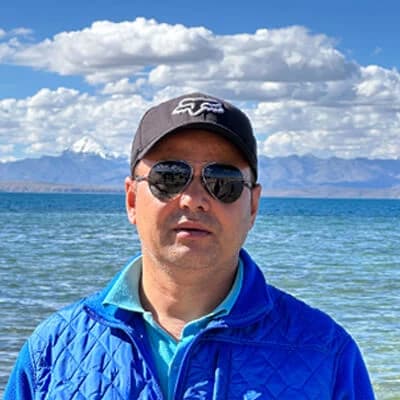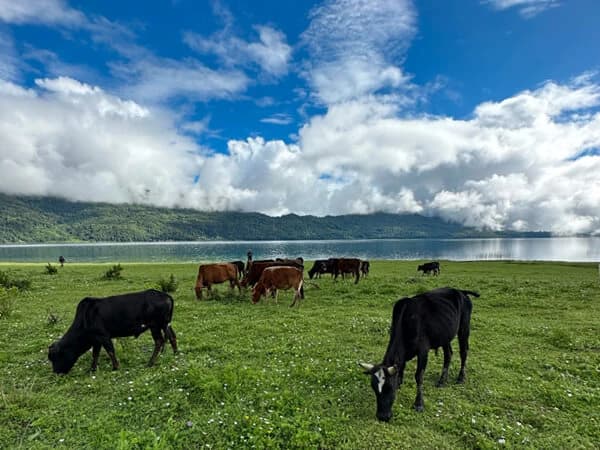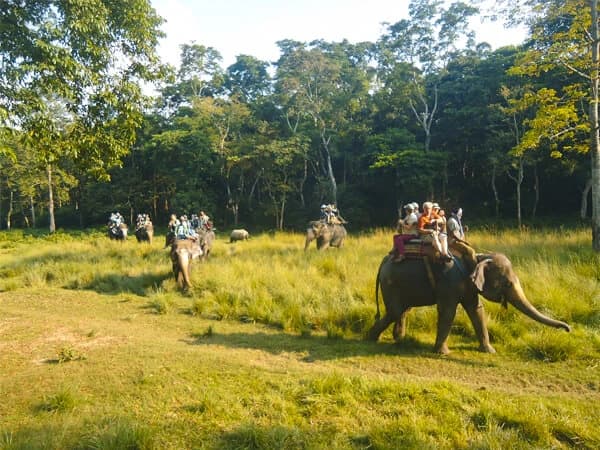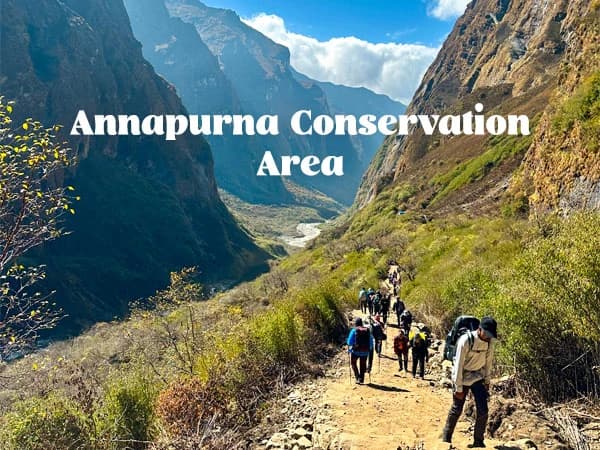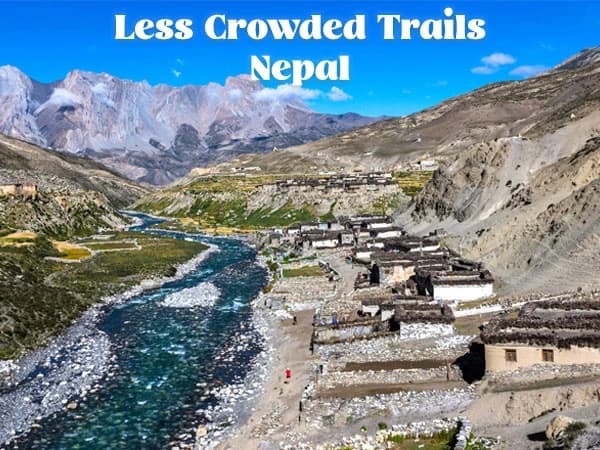Rara Lake is Nepal's largest and most beautiful lake—isolated in the Himalayas, off the beaten track for tourists, and blessed with alpine peace.
Rara Lake – A Place Beyond the Map, But Worth the Journey
Rara Lake – Nepal’s Hidden Himalayan Gem
Rara Lake is a stunning location in Nepal's western Himalayas that not so many people visit. It is referred to locally as "Mahendra Tal." It's Nepal's largest freshwater lake and one of its most stunning. It is surrounded by snow-topped mountains and pine-covered hills. The only things you'll hear are sounds from the birds. It is peaceful and like another world.
It is not a standard tourist destination.
No vehicles. No noises. Pure Himalayan air, and absolute calm.
Whether you enjoy adventure, nature, or just are looking for some peace and quiet, Rara has clean nature and tranquility that few destinations elsewhere in the world can compete with.
👉 Explore the Rara Lake and Bardiya Wildlife Safari Tour
Where is Rara Lake?
Rara Lake lies in Karnali Province's Mugu District, west Nepal. It lies within Nepal's smallest national park, but one of the most scenic, which is called Rara National Park.
Rara lake lies at 2,990 meters (9,810 ft) above the sea level. It is 5 kilometers long and 3 kilometers in width. It is 10.8 km² in area and 167 meters deep. It is large and deep.
It stands tall. It's distant. And that's what sets it apart.
Why visit Rara Lake?
Rara Lake is an excellent example of an off-the-beaten-path destination. While everyone visits Everest, Annapurna, or Langtang, a handful of tourists make it to this location. It is an exclusive opportunity to view nature's beauty in the Himalayas.
Stunning views
It displays blue water with pine forests and white Himalayas on either side. It varies in color and temperature with light, from dark blue to green to light gray.
Complete calm
Far from the hustle of urban living, Rara prefers to be quiet and peaceful. What you can only hear there are birds chirping, paddles splashing in water, and a gentle breeze.
Cultural Insight
The inhabitants around Rara still lead traditional lives. Living in local homes makes you learn about their culture more deeply. Here, you don’t just visit to look—you connect.
It's nature. Nature dictates everything that happens here. It makes it unique.
Natural Attractions and Activities
Boating in Rara Lake
Rent a rowboat and float across transparent waters that mirror the pine-forested hills. It’s peaceful. Still. You might even forget the world exists beyond these shores.

Photography & Sunrise/Sunset Points
The best photography spots?
- Sunrise on the east coast—look at the golden light across the hills.
- Murma Top provides expansive views of the lake.
- Western hilltops with a mountain backdrop during sunset.
Early morning fog and reflections make an ideal backdrop for photographers.
Murma Top and the Surrounding Hills
One of the pleasant walks from the lake is up to Murma Top (3,700m). It is a 3 to 4-hour uphill walk from Murma village.
You’ll be rewarded with:
- A broad panorama of Rara Lake.
- Himalayan peaks in the distance.
- Large pine and juniper trees.
There are nice walks available to Jhyari village, Reuma valley, and along hills on the park's border.
Birdwatching & Rare Wildlife
Rara National Park boasts over 200 species of birds, such as:
- Himalayan Monals
- Snowcocks
- Red-billed choughs
- Rare migratory waterfowl
And if you are fortunate enough, you might see:
- Musk deer
- Himalayan black bears
- Ghorals and leopard
Bring binoculars—birdwatchers will love it here.
Best Time to Visit Rara Lake
While Rara is accessible throughout the year, each season offers a unique flavor:
| Season | Highlights | Notes |
|---|---|---|
| Spring (Mar–May) | Blooming rhododendrons, clear skies | Best time for photography |
| Summer (Jun–Aug) | Lush greenery, fewer tourists | Monsoon rains may affect travel |
| Autumn (Sep–Nov) | Crystal-clear views, festive atmosphere | Ideal trekking weather |
| Winter (Dec–Feb) | Snow-covered beauty, peaceful solitude | Cold, some paths may close |
Autumn is ideal for visibility. Spring brings color. Winter offers raw beauty.
Experience Local Traditions
Local indigenous tribes such as Chhetri, Thakuri, and Dalit communities reside in the Rara. Their way of life is under the dominance of Highland agriculture and religion.
Visit villages like Murma and Jhyari to feel firsthand the welcome of Himalayas. Most tourists stay in homestays that offer local food and warmth near a fire.
They speak nicely. They belong to a culture that dwells on land.

How to Reach Rara Lake
Option 1: Flight + Short walk
- Nepalgunj to Kathmandu (1 hour)
- Nepalgunj to Talcha Airport (45 mins)
- Trek to Rara Lake (3 hours)
Talcha is nearest airport. It is a scenic 2-3 hour walk from there to the lake.
Soar high. Walk slowly. This journey is your reward.
Option 2: Overland Travel with 4WD
It is a long journey by road but an enjoyable one.
- Kathmandu to Surkhet (12–14 hours)
- Surkhet to Jumla or Talcha by Jeep (2 days)
- 2- to 3-hour walk to Rara
While rough, this route offers changing landscapes, mountain passes, and cultural stops.
Option 3: Hike from Jumla to Rara Lake
If you enjoy hiking, there is a unique trekking trail over peaceful hills and ancient valleys named the Jumla to Rara Lake Trek.
Sample 7-Day Plan:
- Day 01: Flight to Jumla – Acclimatization walk
- Day 02: Jumla to Chere Chaur (3,055 m)
- Day 03: Chere Chaur to Chalachaur
- Day 04: Chalachaur to Sinja Valley
- Day 05: Sinja to Ghorosingha
- Day 06: Ghorosingha to Rara Lake
- Day 07: Rara to Talcha by walk – then fly out in a small plane.
It depicts nature and educates humans about various cultures.
Accommodations Around Rara
No luxury hotels around Rara Lake exist. One finds village homestays, tea houses, and village lodges in Jhyari and Murma villages.
They have clean, simple rooms. They provide mostly dal bhat, noodles, tea, and Nepali snacks. Expect comfortable beds, good food, and welcoming staff that will be your companions for the long haul.
Permits and Entry Regulations
Items that you'll require to travel to Rara Lake:
- Rara National Park entrance fee: NPR 3,000 (for foreigners)
- Restricted Area Permit: Access through designated paths such as Mugu.
Make sure to carry copies of your passport, visa, and insurance. Most permits can be obtained in Kathmandu or through a trekking agency.
Insider Travel Tips for Rara Lake Visitors

Planning a trip to Rara Lake? These tips will make you feel prepared and relaxed for the serene beauty of this Himalayan hidden paradise.
Prepare for any weather!
It gets cold on Rara nights even in summer. It is hot by day, but quickly changes. Pack some additional clothes, like:
- A fleece or warm jacket
- Waterproof jacket
- Heat-retaining bottom layers
- Cozy gloves and a hat
Dressing in layers will keep you comfortable as you walk or boat around the lake.
Understand the Altitude
2,990 meters (9,810 feet) isn't really high, but some trails extend over 3,000 meters. Descend slowly so that you don't get sick from being so high up.
- Walk calmly and slowly.
- Stay hydrated
- Rest often
- Avoid alcohol on the first day.
If you are sick, don't ignore it—rest and hydrate.
Mobile Network and Connection
You may have a poor signal close to Rara. Nepal Telecom is generally better in most locations. But there are some areas with poor or no signal at all.
Inform a person of your traveling intentions prior to departure, and appreciate relaxation that comes with disconnection.
Consider travel essentials.
Rara is way off—it does not have ATMs and only a handful of shops. Don't forget to pack:
- Water filter bottle or water purification tablets
- Snacks like energy bars
- Costs of your entire stay
- A first aid kit
There may be some products missing, with increased prices.
Expect simple facilities.
The area offers laid-back, rural living. Most areas have:
- Economy rooms with shared bathroom
- Solar-powered lighting and charging
- Bucket showers or cold showers
It's not glamorous, perhaps, but it's genuine and inviting.
Consider hiring a local guide.
Although they are not necessarily required, local guides can facilitate travel. Guide services can:
- Guide you through simpler avenues.
- Offer information regarding local culture
- Support emergency situations and planning
If you are trekking to Rara Lake from Jumla, having a guide is most essential.
Prepare yourself. Travel light. Leave no tracks.

Final thoughts
Rara isn't a destination - it's a feeling. One of amazement, peace, and deep identification with nature. It may be in a country which is home to world-class trekking and mountains, but Rara quietly wins hearts with its serenity and soul-lifting scenery.
If you are looking for something genuine—something unspoiled and untouched—then you'll find it here. No crowds. No rush. Just you, mountains, and a lake that reflects the sky.
It is a destination and so much more. It’s a trek to Nepal’s peaceful heart.
And after you've left, you'll carry with you for the rest of your life the memory of Rara. Whether you are a photographer, a trekker, or just a dreamer—it tends to stay with you.
Then pack lightly, breathe deeply, and step off the map. Rara lies ahead.


